We used world population data from the United Nations to create this population pyramid of Norway from 1950 projected to 2100.
Our key takeaways?
- transition from expansive to stationary population
- lowering fertility rate
- increasing life expectancy
This animation visualizes the “demographic transition” predicted to occur this century. Demographic transition is the shift from high fertility & mortality to low fertility & mortality. That is: people will live longer and have fewer babies.
Norway is a perfect example of this trend. This transition begins in 1950 where the population pyramid resembles a triangle. This is an “expansive” population, where both fertility and mortality are high.
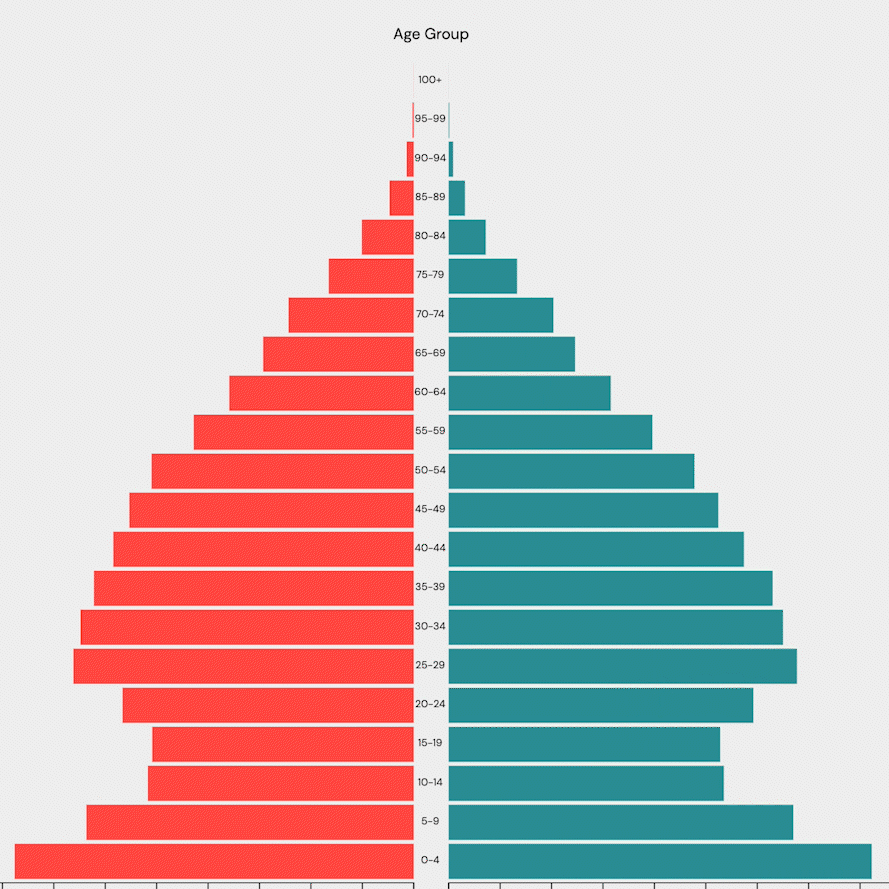
Over time, the triangle shifts to a pillar-like, rounded shape, as more people live into their 80s and beyond. This represents a “stationary” population where both fertility and mortality are low.
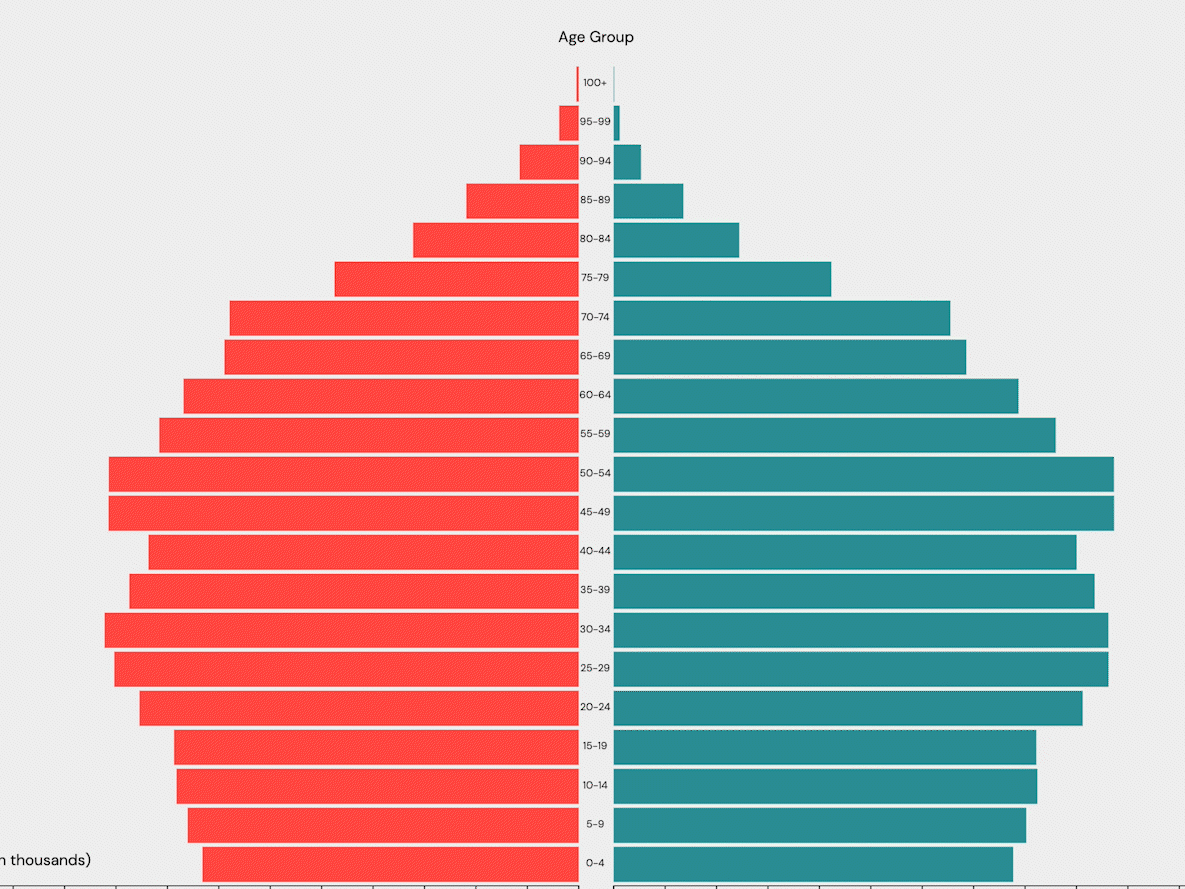
The UN forecasts the global population peak in 2100 at 10.4 billion, ending a period of rapid population growth.
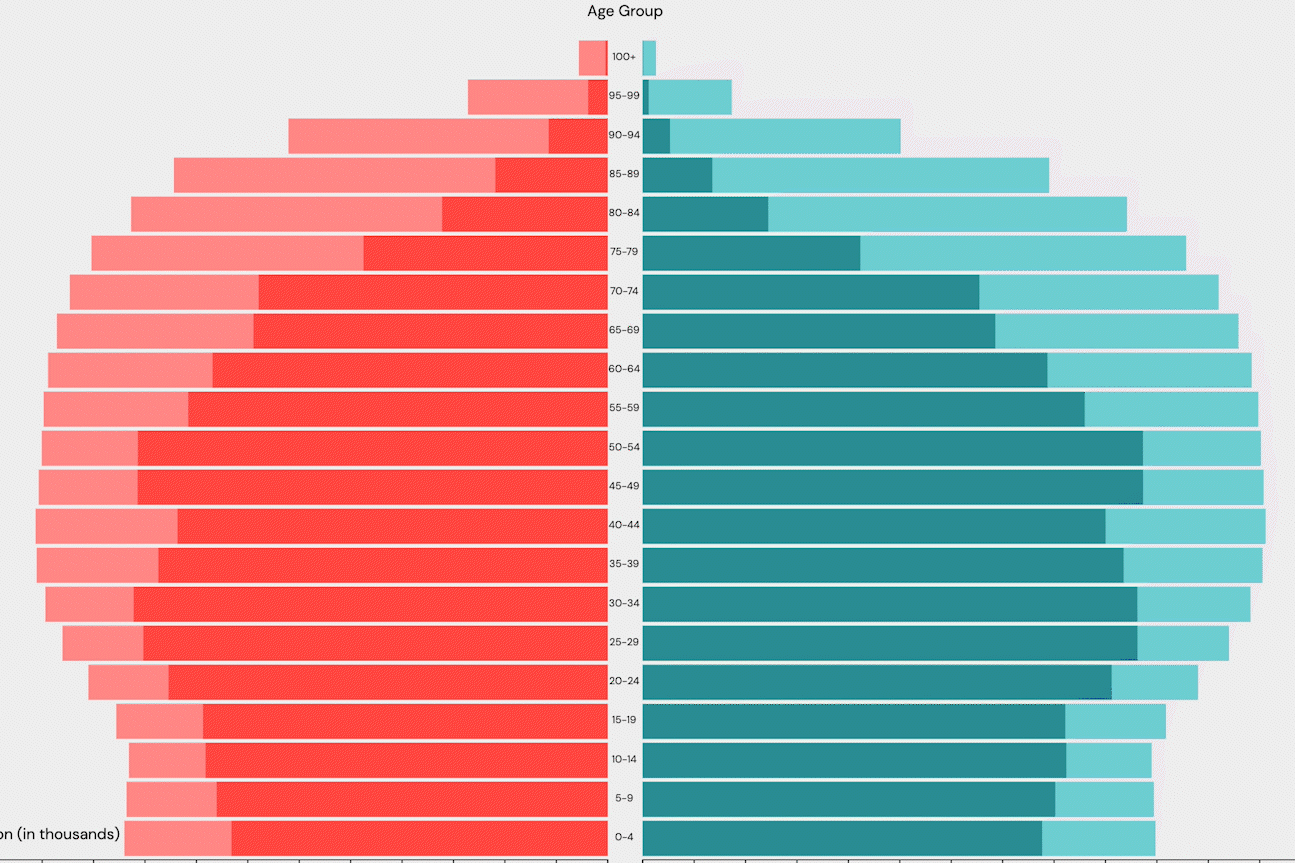
Norway has already begun this transition in both fertility rate and life expectancy:
| Fertility rate (births per woman) | Life expectancy at birth (years) | |
| 1960 | 2.9 | 74 years |
| 2021 | 🔻 1.6 | 🔼 83 years |
And these trends are expected to continue.
Although the number of babies born per year is projected to continue increase through 2100, this still represents a decline in fertility. The increase in births doesn’t keep up with the increase in the number of women of childbearing age.
Other countries, (perhaps not Sub-Saharan Africa) are expected to follow. This pyramid represents a bright future where technological advancements in medicine coupled with less hunger, poverty, and conflict enable more people to plan their families and live longer lives.
As the age of the population in Norway has changed, so have their religious practices. In the 1980s, the vast majority of Norwegians self-identified with a religious affiliation. For the most part, this represents Lutheranism, the state Church of Norway. Over several decades, especially at the start of the 21st century, we see a rapid decline in rates of affiliation. When comparing this decline to public practice of religion, a different story emerges. Public practice has remained quite steady over the past few decades, but it still represents a much smaller portion of the population than rates of affiliation would lead us to believe.
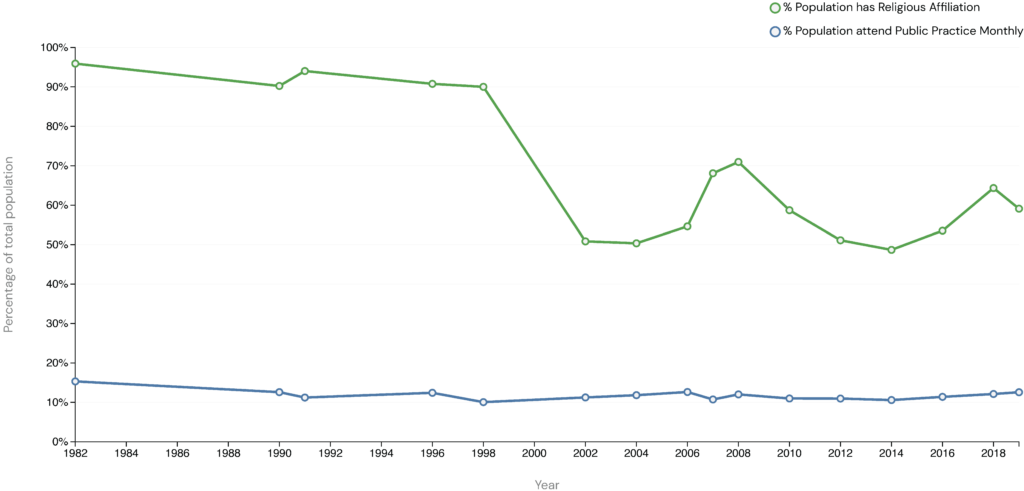
Norway is among the least religious countries and has one of the highest percentages of ‘nones’ in Western Europe, making it a topic of particular interest to demographers of religion. Religious affiliation was tied to national identity and nearly all religiously affiliated people belong (or belonged) to the Church of Norway. However, in 2017, the separation of church and state was finalized. The long process of separating religious and national identity left those who had been raised Christian freer to disaffiliate. In 2017, 28% of those raised Christian no longer identified as Christian.
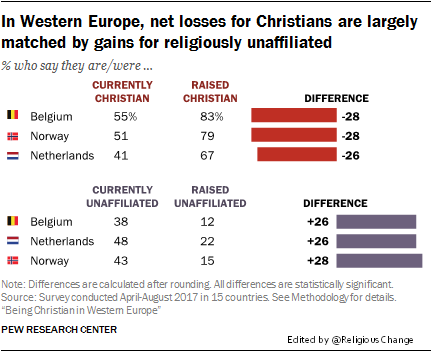
The trend of disaffiliation will likely continue, but secularization does not mean rejection of all spirituality. For example, a higher percentage of Norwegians believe in a higher power or spiritual force than do not believe in any higher power. Even with secularization, religious groups will always exist.
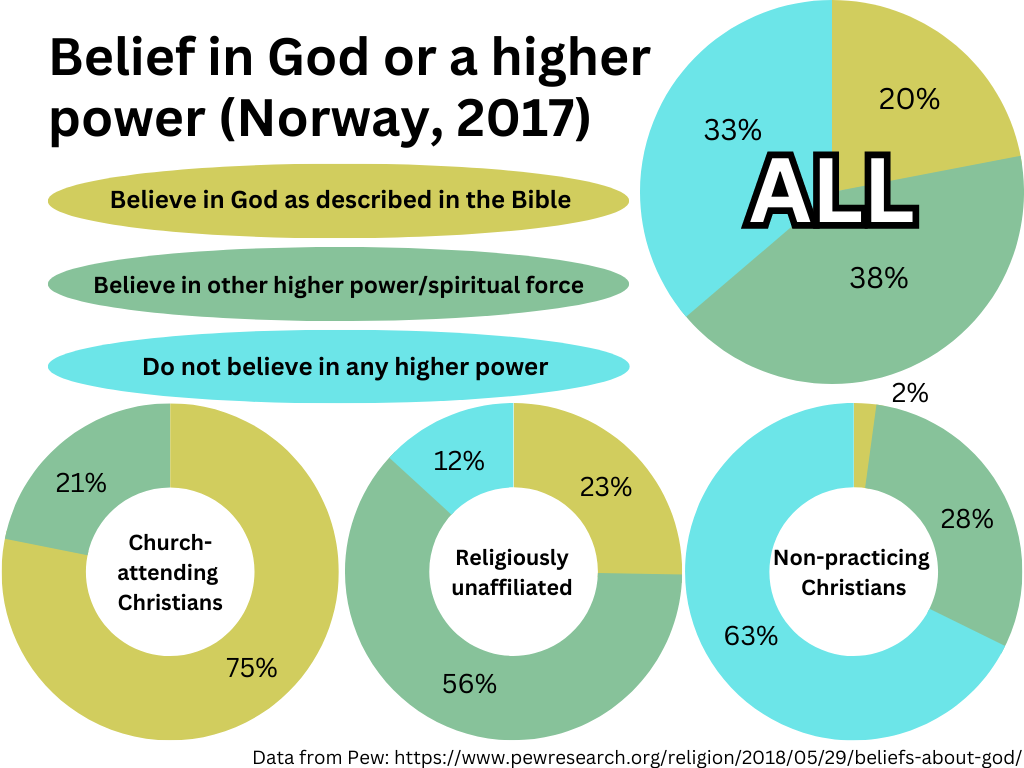
Secularization in Norway is a complex process rooted in political and religious reforms which reframed cultural, national, and religious identity and belonging. Understanding secularization in Norway helps us build more accurate models of religious change.
